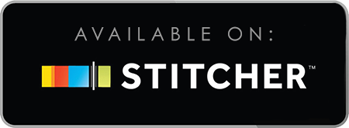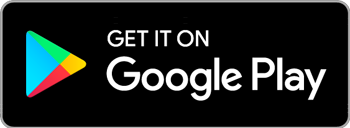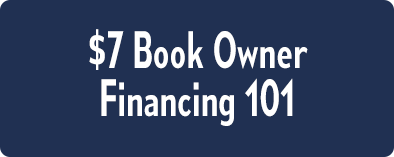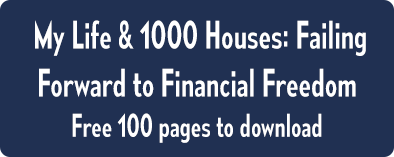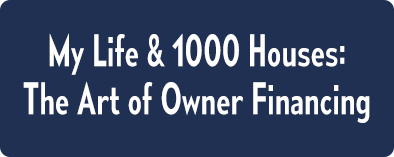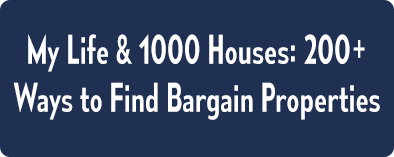PODCAST
Going Strong With Wholesale With Larry Goins
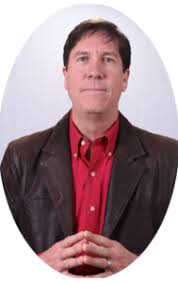

Mitch Stephen chats with
Larry Goins
Episode 376: Going Strong With Wholesale With Larry Goins
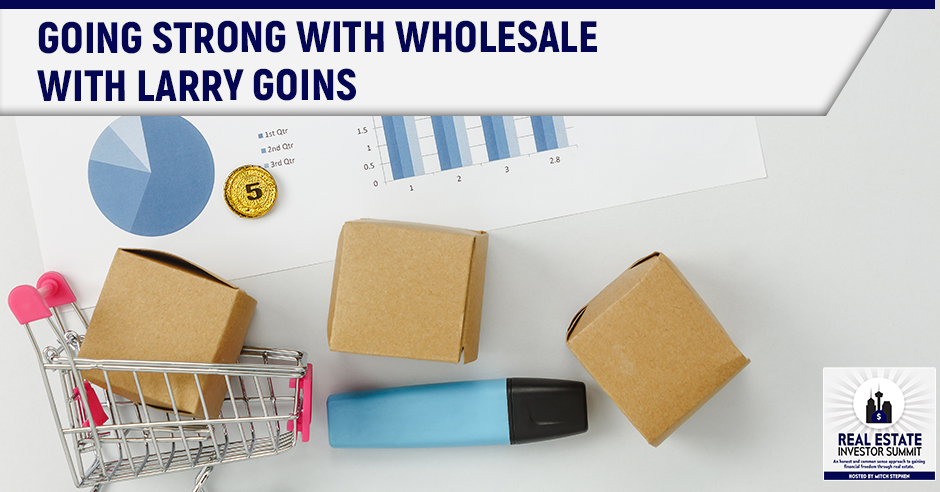
While wholesaling real estate may seem like a daunting task to some, with some foundational guidance and knowledge, you may find that it’s a rewarding form of real estate investing. No matter how big or small you go, you’ll find that the numbers keep adding up in your favor, and sooner or later, you’ll have a self-funding, self-sustaining business that’ll keep you flush. Mitch Stephen is joined by Larry Goins, a longtime real estate investor. Mitch and Larry discuss the primary advantages of wholesaling real estate as an investor. There are so many deals out there that you can sink your teeth into, so you may want to consider what Larry and Mitch have to say.
—
Watch the episode here
I have Larry Goins back one more time because he’s going to talk to us about his Filthy Riches Program. He’s got a way of buying houses all over the country. Houses that people don’t even want. He’s going to show you these tremendous returns we can make. Larry Goins is a friend of mine. We met each other bumping around in the different circles we run around here. We do similar things and we have a similar mindset on, not just flip real estate, but how to manipulate real estate and generate a residual income. With no further ado, how are you, Larry Goins?
What’s up? How have you been?
I’m doing good. This is going to be exciting. Your Filthy Riches Program is a tremendous way for people to start because it’s at the lower echelon property values and there’s big money in that arena.
The cool part about it is you and I both have students all around the country. We’ve got students around the world. This Filthy Riches Model that we’re going to talk about blows me away. How many people have started out from scratch, never done a deal before, bought course after course, and been to seminar after seminar? After they learned this model, they went out and did their first deal. I didn’t invent it. I like to think that I perfected it. I’m going to go over in detail exactly what we do but we’re going to invite people to a special webinar that you and I are going to do to give them even more detail at the end. How about that?
It’s REInvestorSummit.com/riches. Get us started on what Filthy Riches Program is all about.
Filthy Riches is a proven system for buying and selling cheap houses anywhere in the United States at deep discounts with none of your own cash, credit, and zero risk. We then turn around and sell the property for 3 to 6 times of what you paid for it with seller financing. We’re going to sell or finance it with a reasonable down payment all with no buyer’s list. People talk about getting started in wholesaling. Your biggest asset is your buyer’s list. With this, you don’t even need a buyers list. If you’re brand new or if you need cash, we’re going to show you how to sell the note for immediate cash or you can collect monthly payments for the next 10 to 20 years. It’s one of the fastest, safest, and easiest way I’ve ever seen for people to put anywhere from $16,000 to $28,000 cash in their pocket in the next 30 days. It’s even faster, easier, and safer than wholesaling. I love this model.
Your biggest asset is your buyer's list. Share on XOne of the reasons that this thing works so well is you want to sell the property for 3 to 6 times what you paid for. You and I both know you can’t sell $100,000 house for $300,000 to $600,000 even with seller financing. However, you can easily sell a $5,000 to $10,000 house for $30,000 to $40,000 with seller financing and payments less than rent. If you guys are taking notes, you should write down, payments less than rent. You could even sell a $20,000 to $30,000 house for $60,000 to $90,000 with seller financing and payments less than rent. All you need to get started with this is a phone and an internet connection. You can easily do it from anywhere because all the ways that I’m going to show you how to get deals and how to sell the properties, you do it all on the internet. I would venture to say, everybody who’s reading this blog, you’ve got a phone and an internet connection.
You don’t do a lot of fix-up in these houses or any at all. You get them and then you sell them as is.
That’s the best part. You know me, Mitch. I hate rehabs. I love real estate but there are two things about real estate I hate, tenants and rehabs. I don’t have to deal with either one of them. A sample deal might be, let’s say I pick up a house for $5,000. I know some of you are thinking, “There’s no way. Maybe that worked back in the ‘90s, before the real estate crash or after the real estate crash.” I could tell you, I pick up houses. I picked up one little mobile home not too long ago for $1,500. We buy a lot for $3,000, $4,000, $5,000, $7,000, $10,000, $15,000, $20,000 and $30,000. It can’t be a blower upper, fixer upper is okay but it can’t be a blower upper. You’ve got to know the difference.
What’s a blower upper?
If you see in the listing and the value is in the lot, you know it’s a blower upper. Here’s the deal. We want to find houses that are close to livable. If the ceiling has caved in, if the floor is falling in, if the roof is falling in, all that stuff, you don’t want something that’s going to be too overwhelming for a weekend warrior. Somebody that’s going to go out there and do a little work to it either before they move in or before they rent it out. We’re going to take that little $5,000 house. We’re going to put it out there and we’re going to sell it.
I’m going to show you all the different ways to sell it on the webinar, but a few of the different ways, you can sell them on eBay. You can sell to a neighbor, to an investor, and on Craigslist as well. Let’s say we take that $5,000 house. We turn around and sell it for $30,000. We get a couple of grand down and we’re going to finance $28,000 at ten years at 9%. The payment is going to be a little over $350 a month. Think about this. I paid $5,000, I got $2,000 down. I’m leaving closing costs out to keep it simple. I close the cost to change your yield a smidge, not a whole lot. I got $3,000 in it plus closing costs and I’m getting $354 a month for the next ten years. That’s 141% return on my money. Is that good enough?
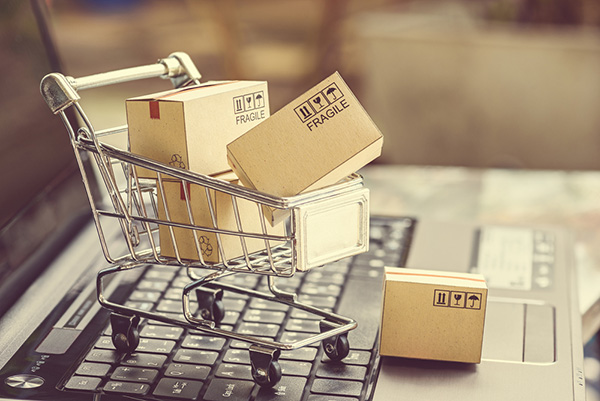
Wholesaling Real Estate: With wholesale, you can sell to your neighbor, to an investor, or even on Craigslist as well.
That’s good enough. You don’t need to be exact. You don’t even need to know where the decimals are in this situation.
Not at all. I’ve got no mortgage, no vacancies, no repairs, no taxes, no insurance, no tenants, and no rehab. I love this model.
Are you doing it all over the country, right in your hometown or certain states? Where are you doing this?
You’re not going to do it in Orange County, California. You’re not going to do it in Manhattan. You’re going to go where the properties are. I’ve done this in twelve different states right from my office in Lake Wylie, South Carolina. I focused on the Carolinas because that’s where I am but you said right in my own local market. I’m in Charlotte, North Carolina MSA. Even though I’m right across the state line from Charlotte, North Carolina, I’m in South Carolina. I haven’t bought a house in Charlotte in over three years. I go where the deals are. We got a deal where it was listed in the 70s. We picked it up in the low 20s. About 30%, 35% of list price. As long as you’re not trying to buy where all the competition is, then you’re going to be able to pick up these deals at 50%, 40%, 30%, sometimes even 20% of list price. I got one not too long ago. It was listed for $44,000. I paid $9,150 for that house. Do the math. It doesn’t take long to get rich quick with that kind of deal.
I understand that. We’re doing the same thing. I’ve been a believer in these little throw away houses all along because I built my career starting out with those houses. They were smaller numbers. It was easier for me to find private lenders. It was easier for me to raise the capital or put it on my credit card even until someone would give me my money back in a down payment. We also bought a house for $12,000 and put it up for sale for $36,000. We always say with a reasonable amount down because we don’t like to name the number. The buyer says, “What’s reasonable?” I say, “What’s reasonable to me is $15,000, but that’s neither here nor there. Why don’t you tell me the most you can do and I’ll take it to my partners and we’ll see if we can’t get your house. The more you offer that, the easier it’s going to be for me to get it. Let me know and I’ll go fight for you.”
In addition to that, instead of telling them when they say, “What’s reasonable?” you say, “Most people put around $15,000 down.” “I want to be like most people. I want to be able to do that.” It depends on what they have. We try to get as much down as we can.
There's a lot of different ways you can get the funds to invest in real estate. Share on XHow are you raising the funds to buy these houses? Where do you get your money?
There are a lot of different places you could do that. You can use private money. You can use hard money because the numbers are such. One of the best ways is to raise private money. You can put them on a credit card. You can sell a partial. You can table fund these deals using your note buyer’s money. Let’s say you have no money to buy this deal. You don’t have $5,000. You go out and you find a note buyer that’s willing to buy this note. Let’s say if you even sold this note at a 20% yield. A 20% yield on this note that I described, you’re going to cash out quite a bit of money. You’re going to cash out about $19,000 on that deal.
Let’s say you sell it with the 18% yield, that’s $19,684 on that specific note. You’ve got your note buyer lined up. They wired the $19,000 to the closing attorney. You buy the property. You sell it with seller financing and assign the note right there at closing. You use the note buyer’s money to pay your seller and then you keep what’s left over, which is $19,000 minus $5,000. You only have $3,000 in it. You netted $16,000 minus your closing cost of course. You can use your note buyer’s money to pay your seller. It’s called table funding. Lenders do it all the time. I used to be in the mortgage business. It’s a part of the whole industry.
In this case of the table funding, you don’t have any of your own money on this. To try to figure out the yield, it’s infinity. You can’t calculate a yield if you don’t have anything in it.
You’ve got to have some money in it.
Let’s run through it. You get this house under contract to buy it for $5,000, and then you find someone who wants to give you $2,000 down. You still need $3,000 to purchase the property. You find a note buyer and instead of doing the whole way and putting up the other $3,000 yourself, you don’t have $3,000. Because you don’t have the $3,000, you can’t make 141% return on your money but you can still make a substantial cash deposit into your bank accounts. You find a note buyer and you agree to selling this note so that he can get a 19% rate of return, which means he’s going to bring about $19,000 to the table.
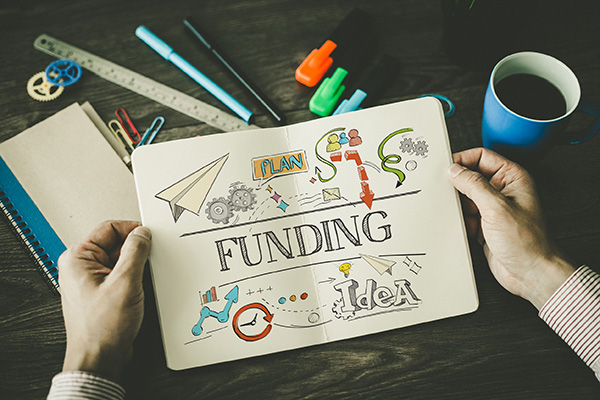
Wholesaling Real Estate: Table funding is using your buyer’s money to pay your seller, and it’s something that lenders do all the time.
He brings the $19,000 on the table. This all happens simultaneously or in a very short period of time from one to the other. You go in to buy that house and your note buyer comes in with the $19,000. You buy a house with his $19,000. You ended up with $14,000 in your pocket, but then you picked up the $2,000 in your down payment so you’re back up to $16,000. That’s how it works. As Larry said, there are some closing costs in there. It won’t be quite $16,000. It will be a little bit less, but who’s counting? This is a great deal. You did it with lending your own money. When you learn how to do deals like that, you become unstoppable because this can go on day after day, month after month, year after year.
Think about this, Mitch. You do one of those deals. You cash out $16,000, you put $6,000 in your pocket, and then you buy two houses with the rest. Now you have $700 a month coming in. You sell those and then you go by $4,000. You’ve got $1,500 a month coming in. You could sell one, keep one. You could sell every other one. You could sell five years’ worth of payments and never run out of money. Sell enough to get your cost back. Is that great or what?
This is why we walked off into the professional zone. Some of the stuff that Larry is talking about, you’ve got to be a pro at it. That’s why you hire a coach like Larry or myself or somebody so they can help you explain your choices. When you see a choice that you don’t understand, if you ever manipulate a deal using that technique, you will understand that after you live it. Sometimes it takes someone to walk you through it. Larry, if people want to know more about your Filthy Riches Program, where they can buy these very inexpensive houses all across the country, they go to REInvestorSummit.com/riches. Do you have any samples or any free stuff to give away or am I putting pressure on you here?
When they sign up for the webinar, we’re going to give them a free analyzer to help them analyze these little deals literally in a couple of seconds flat. It’s very simple. Everybody who signs up for the webinar is going to get an analyzer absolutely free. They will be able to analyze these deals in two seconds flat.
You’re going to get a free analyzer and you’re going to get to watch the webinar on the Filthy Riches at REInvestorSummit.com/riches. Tell me, what is the best deal you’ve ever made using this strategy?
I bought a house. It’s hard to say the best deal because the great thing about this is you do a lot of small deals and they all add up. Before you know it, you’ve got tens of thousands of dollars a month coming in. Naturally, you need to sell the note if you’re starting out. If you’re broke and you don’t have any money, you need to sell the note. However, your goal should be to keep the note. Once you sell a few, you get enough money coming in, then it’s a self-funding asset. In other words, what you’re going to do is let’s say you’ve got $5,000 a month coming in.
If you do a lot of small deals, they all add up. Share on XYou can buy a house every month without having to come out of pocket with anything. You get up to $10,000 a month, you can buy two houses a month. You get up to $15,000 a month, you can either buy three houses or you could buy a $10,000 house or you can buy one $15,000 house. You eventually start upgrading and upgrading. You’ve got more and more money coming in every month and it’s self-funding. You get to the point where you can’t spend the money fast enough. You’ve got to find other deals to invest it in. That’s a beautiful thing as you well know.
That’s what I try to explain to people. It’s not about selling the notes with a big hit. I can’t spend more than $250,000 a year. I can eat as much as I want. I can drink as much as I want. I can go and travel as much as I want. I live in the house I want. I drive the car I want. It’s tough to spend over about $220,000. What happens here is I’ll manipulate houses or whatever I get about $200,000 proposed income for the year. Sometimes it happens in the first quarter. Sometimes it happens in the first six months. I started doing these deals in my IRA or my 401(k) because there’s no sense paying tax on more and more money. Do you invest like that yourself?
Absolutely. I just keep it going.
The other thing with these properties is you’re not a landlord. You’re just collecting a payment. If something goes wrong, they’re the owner of the house. You’re not trying to find a plumber over. You’re just collecting a payment and if they stopped paying, you resell it again like you sold it the first time. Hopefully, that doesn’t happen but it’s going to happen if you do this enough. There will be some choices. To me, the greatest strategy in the world or on the planet is to buy it, don’t fix it. Owner finance it for double or more and watch the person that’s making payments to buy the house go over budget fixing up your collateral. That is the best strategy on the planet as far as I’m concerned. I think you’ve latched on exactly that too, Larry, because that’s exactly what you’re doing.
I do like the lower price band properties. You get to sell them for $3,000, $4,000, $5,000, $6,000, sometimes even more. I bought mobile homes $1,500 to $2,000 and sold them for $19,900, $29,900. You get ten times of what you paid for it. People say, “You’re ripping people off.” Some people say that, not many but some people. Let me tell you something. I am helping that person become a homeowner. I’m providing them with housing that’s going to be theirs and there will be an end to the payments. What’s sad is they pay the same amount in rent and there is no light at the end of the tunnel. They’ll always be a tenant regardless of the price I’m selling them the house for and I never sell it to them above market. I sell it to them at market, sometimes even less. There is going to be light at the end of the tunnel for them and they’ll see. At some point, they have no more payments and they own it free and clear.
It is a great service that we pick up these houses because they usually indicate that they’re going to be decaying quickly. Nothing good happens to a vacant house. The neighborhood suffers, the neighbors suffer, the taxing authorities suffer because the municipality is not getting their tax money. Contractors are suffering because they’re not out there doing the work on those houses. There are a lot of wins that happen in this column when we go out and change the dynamics of these old neglected houses. They’re not always old. They’re just neglected.

Wholesaling Real Estate: You eventually start to continually upgrade your business, and when you’ve got more and more money coming in every month, your operation becomes self-funding.
I picked up nice double-wide mobile homes on an acre of land built in the late ‘90s, early 2000s, three-bedroom or four-bedroom, two or three bath, vaulted ceiling, plant shelf, garden tub, deck off the back. I’ve picked them up for $8,800, $9,100, $12,000, $15,000. They’re in small towns where people were born and raised. They have ties to the community. They have relatives there, so they have a support system in place and that’s the best buyer to have. They’re not going anywhere. They’re not transient. They were born and raised there. They know everybody and everybody knows them. Here’s the best part. If they run into a problem and become late on their payments, they have friends, relatives, and people that can help them out to help them keep their house.
I was going to say, you probably find a lot of your stuff in rural America, just outside the city limits.
Small town USA.
We’re doing a lot of that here in Texas too. Those little communities are sometimes tighter and more charitable than certainly some of these big cities because it’s a mess up there. You go to REInvestorSummit.com/riches. Is there anything else we need to know before we call it a day on this subject?
The most important thing is to get people over there to watch the webinar. We’ve only scratched the surface. A lot of people are scared about, what happens if they stop paying? Quite frankly, that’s the second best thing that could happen, if they stopped paying. On the webinar, I’m going to tell you the best thing that could happen and we’re going to go through it. I’m going to show you sample deals and everything that we’ve done real-life deals. You’re going to get the analyzer. We’re going to show you how it works, how to market the property, and how to have it sold before you even buy the property. You guys need to go to that website that Mitch mentioned. Sign up for the webinar. It’s a special link to a special webinar we’re doing for you. We’re going to show you case studies and everything.
You did such a good job in the webinar, succinctly talking about it one step at a time and showing the examples. The case studies are so important. I love case studies. You guys get over to REInvestorSummit.com/riches. That’s about it for now. I want to compliment all of you for taking the time to get you some Larry Goins. We’re out of here.
Important Links
- https://1000houses.com/podcasts/larry-goins-2/
- REInvestorSummit.com/riches
- REInvestorsummit.com/Moat
- REInvestorsummit.com/livecomm
- ReInvestorSummit.com/101
- REInvestorSummit.com/coaching
About Larry Goins
 Visionary, CEO, Entrepreneur, Real Estate Investor, and Educator
Visionary, CEO, Entrepreneur, Real Estate Investor, and Educator
Larry has been investing in real estate for over 20 years. Previously, Larry served as president of the Metrolina Real Estate Investors Association in Charlotte NC, a not-for-profit organization that has over 350 members and is the local chapter of the National Real Estate Investors Association. Larry is an active real estate investor and travels throughout the United States speaking and training audiences at conventions, expos, and Real Estate Investment Associations on his strategies for buying and selling houses. Larry has also written several books on real estate investing that are available wherever books are sold. Larry and Kandas are also the host of the BRAG Radio Show. BRAG is all about using real estate to Be Rich And Generous.
Between speaking engagements and mentoring other investors, Larry oversees the daily operations of his investing business that wholesales properties, seller finances properties and holds properties for investment.
On a personal note, Larry and his wife, Pam, have two children, Linda and Noah. He also has a granddaughter, Ember. They are a member of New River Community Church in Lake Wylie, SC. As a husband, father, businessman, and real estate investor, Larry holds true to his core values and moral integrity. His personal and business motto is, “People and principles before profits.”


